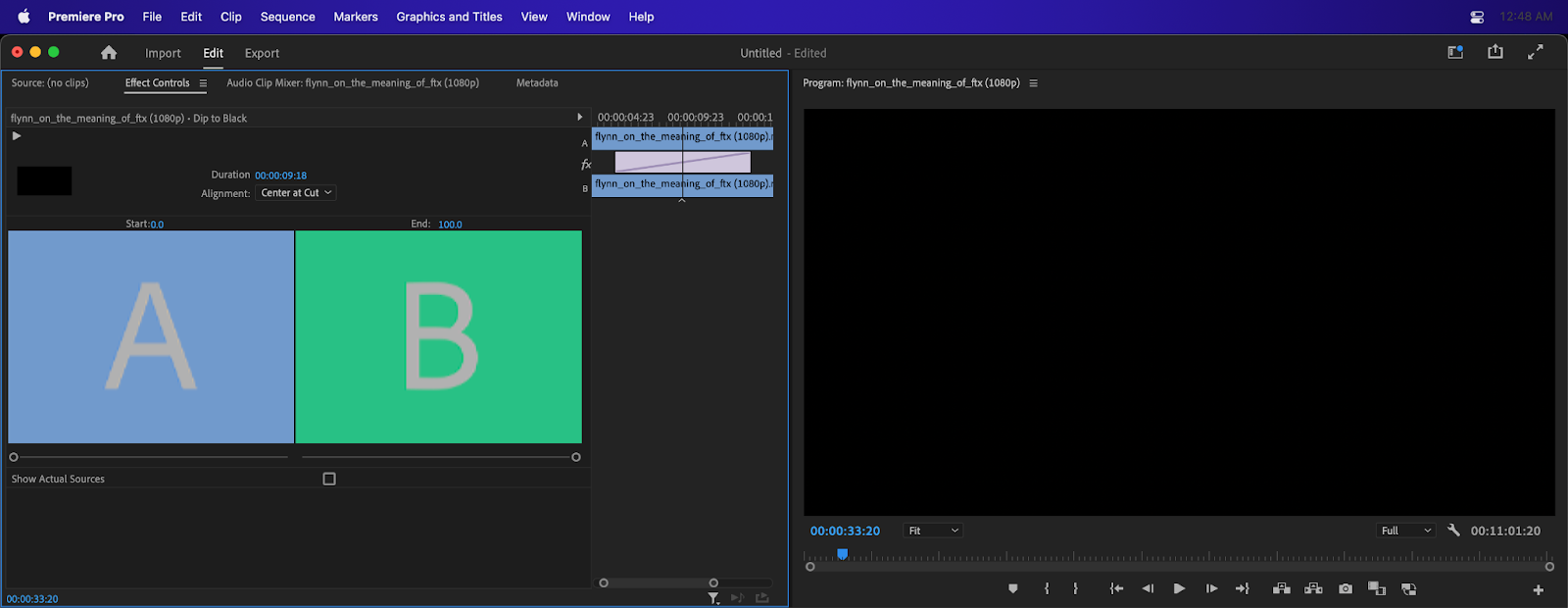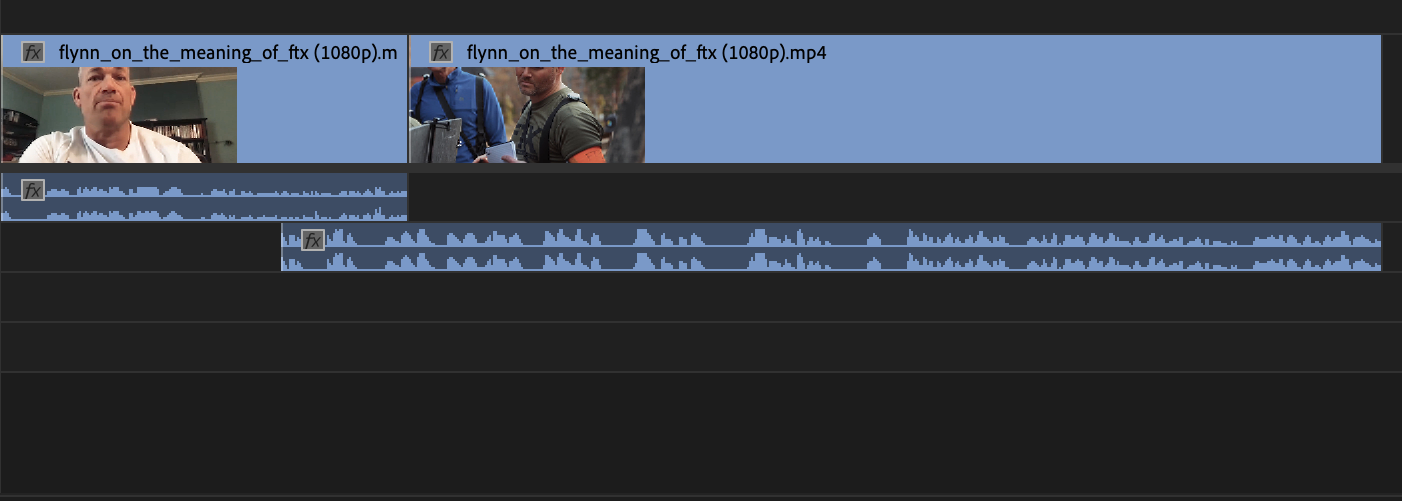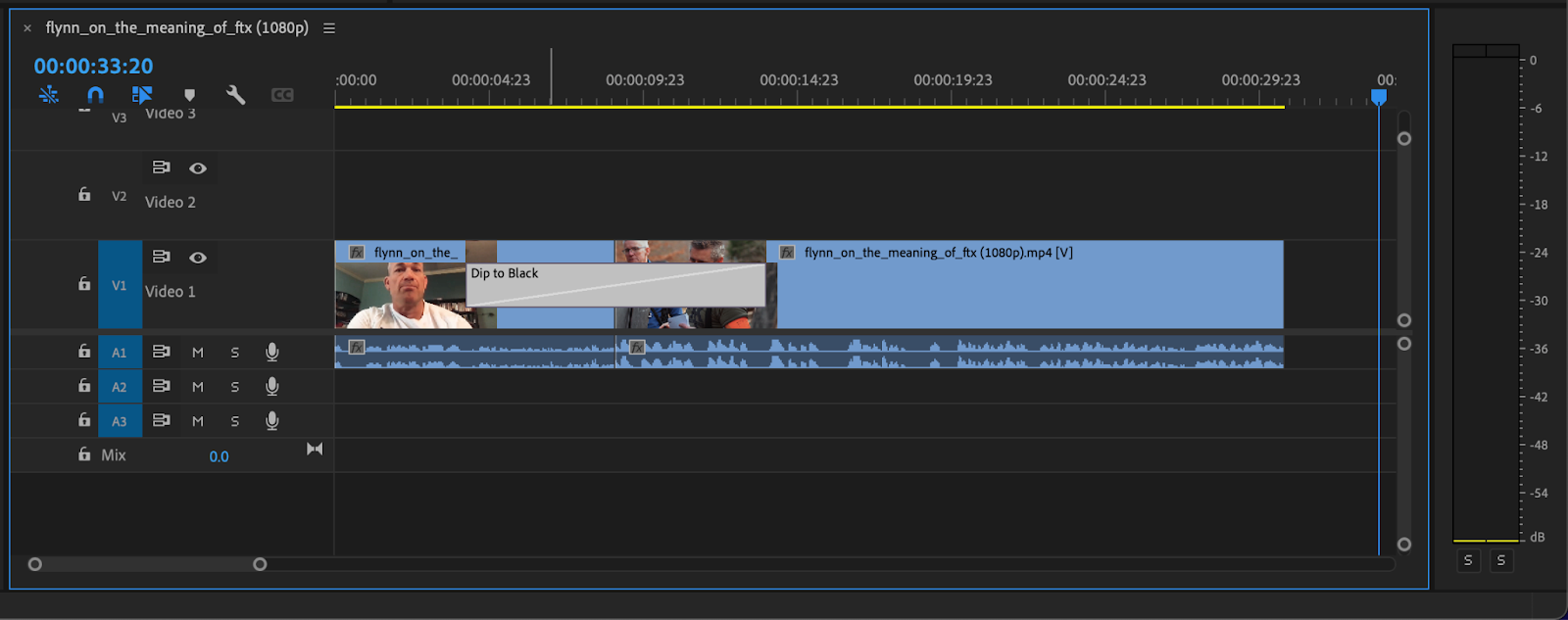

Adobe Premiere Pro Transitions: 5 Transition Ideas and How to Add Them
Video transitions are one of the many excellent tools in a video editor’s toolbelt. Transitions can be effective as a method of progressing the flow of a video, with some transitions even being able to convey emotions.
Transitions have come an incredibly long way. What was once a complex process is now as simple as dragging and dropping a digital effect. Every non-linear editor out there has a slew of transition presets ranging from simple to complex animations. Adobe Premiere Pro has phenomenal transition options for filmmakers and content creators.
Premiere transitions are simple and easy to use and are wonderful for beginners and professionals alike. This Adobe Premiere Pro CC tutorial will go over amazing transition ideas for all kinds of content as well as the types of transitions and how to use them.
About Premiere Pro video transitions
Transitions are what bring viewers from one video clip to another. The goal of adding a transition is to make this journey completely seamless. A perfect transition should go completely unnoticed by your audience. Some really basic transitions can even be made yourself without the use of any sort of effects or plugins.
How to add transitions in Premiere Pro
Adding transitions in Premiere Pro is similar to adding video effects. Like video effects, transitions can be created manually or through the use of templates. Most users will be going the template route when it comes to transitions.
In Adobe Premiere Pro, transitions are actually found in the effects pannel. This panel has folders containing video transitions and audio transitions.

All you need to do to add a transition is to drag and drop the transition you want onto your respective video clip. You’ll need to drag the transition over either the end or the beginning of the clip.

You can also add a transition on two different clips by dropping the effect in the middle of both. You may need to zoom in to your timeline to properly view the transition effect which will show up as a small rectangle. You can then change the scale and speed of the transition by grabbing onto the edges and adjusting it like you would a video clip.

If you right-click on the transition, you’ll be able to change the duration of the transition manually as well as delete it entirely. Something to note is that transitions can take up a lot of processing power. It’s important to check what your computer compatibility is before utilizing a lot of transitions.

Editing transitions in Premiere Pro
As mentioned before, transitions can be edited by dragging and right-clicking on them. They can also be adjusted by going to the effects control panel in the upper left-hand of Premiere. Here, users are given more precise control over their transitions.

5 useful transition ideas
The transitions you use should always match the work you’re creating. It can be easy to get carried away and start using bombastic transitions such as the glitch transition for your content. While these types of transitions might look cool, they’re not always the most practical. Remember, transitions should be seamless and shouldn’t take up a ton of time.
There are, generally, a few expectations to this rule though. Hyper-stylized content thrives off of bombastic transitions. Things such as music videos, animations, and film genres like comedies use crazier transitions as a way to match the tone. Like anything, transitions are a creative choice that needs to match the type of content being made.
1. J Cut
The J Cut is a wildly simple and effective transition that is used constantly, often without people even realizing it. The J Cut is done by un-linking the audio on two clips and then moving the audio on one clip so that it overlaps with the second. Even though there’s a hard visual cut between the first and second clip, the audio of the second clip coming in gives the illusion of a smooth transition.

The J Cut is something used in countless films and documentaries. It’s a great transition for those creating films, vlogs, documentaries, or really any type of lifestyle content because of how natural it is.
2. Cross Dissolve
The Cross-Dissolve is such a seamless yet effective transition. A cross dissolve is simply fading one clip’s opacity to zero while fading the other all the way up to one hundred. This can either be done by changing the opacity of the clip manually or by adding in the Cross-Dissolve template from the effects pannel.

Cross dissolves have so many use cases. Often, it’s meant as a slow, subtle way of bringing the scene from one location to the next. It’s great for content with a calmer pace, working particularly well in long-form content.
3. Cross Zoom
The Cross Zoom is a more bombastic transition, but great for social media content or videos that have high energy to them. The Cross Zoom is Adobe Premiere’s only zoom transition preset and is great to have around if you don’t feel like animating while you’re video editing. That being said, the Cross Zoom can also be done manually by using keyframes if you so desire.

4. Dip to Black
Dip to Black or fade to black is a great transition for opening or closing your video. This is, again, most common in narrative films and documentaries. All this is doing is setting the opacity of the screen to zero, leaving it completely in darkness.
What this transition does is gives a sense of finality and closure or signify the start of something new. Fading to black can also be used to separate acts in a story or to signify the half-way-point in a piece of media.

5. Morph Cut
While this is can be more of an effect than a transition, it’s getting included simply because of how Adobe classifies it. The Morph Cut is incredibly useful for those who shoot and edit a lot of interviews. The Morph Cut takes two clips and blends them together to create one seamless clip. For example, if you have an interview where the interviewee stutters, you can cut out the stutter, add the Morph Cut, and make the entire sequence appear seamless.
While this isn’t always a perfectly seamless transition, when it works it really works. Just make sure that there isn’t any camera shake or quick speech patterns in the two clips where the morph cut is being applied.

Tips for improving your Premiere Pro transitions
The great thing about transitions in Premiere Pro is how versatile they are. You can even bring clips into After Effects using the Adobe Dynamic Link to create even more complex transitions. There is also a slew of transition templates online for Premiere Pro for both Mac and Windows.
Some of these are free transitions while others will cost you. Transitions available online usually come in transition packs as well (some being a free download while others being paid).
Save time with default transitions
The most efficient way to use transitions is by using the default premiere pro templates. These free premiere transitions are simple and take up zero editing time. We went over five of the most useful ones today, but there are dozens to check out in the effects panel.
Use consistency
It’s crucial that your transitions are consistent throughout your project. Drastically changing the types of transitions being used throughout your project can be distracting for the viewer. It’s best to stick to a few transitions while editing for the sake of consistency.
Don’t overdo it
Transitions are something that can be so easy to overdo. The most professional-looking videos though are the ones with very minimal transitions. Overdoing your transitions can come off as amateurish if you don’t know what you’re doing. That’s why the best premiere transitions are the ones that completely blend in.
Conclusion
Transitions can turn your video from professional to amateur incredibly fast if not done properly. That’s why it’s important to have a good understanding of transitions before beginning to edit content. Premiere Pro makes transitions painless to work with though because of the amazing built-in templates. When it comes to video editing, every second you can save on the content of the edit itself is key.
That’s why extensions such as Simon Says are so important. Simon Says is a transcription service for Adobe Premiere Pro that helps you save time on editing. In the post-production world, every second counts.
Simon Says helps you create wonderful captions in 100 different languages and runs natively within Premiere Pro. Simple tricks and extensions such as these in video editing can help transform your content into something truly special and take it to the next level.




